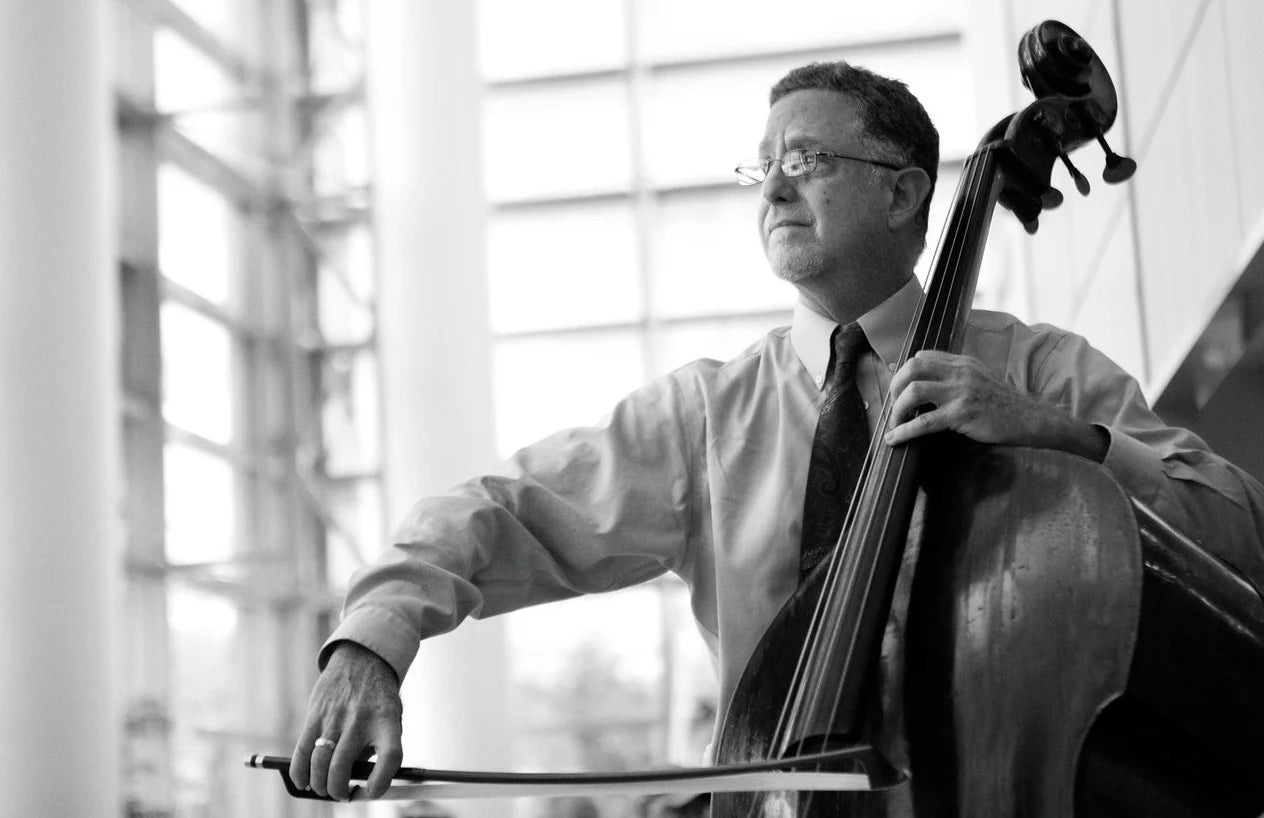David Heyes
Heritage Series Book 2 for double bass & piano (ed. David Heyes)
Heritage Series Book 2 for double bass & piano (ed. David Heyes)
Couldn't load pickup availability
About the Book
The Heritage Series features a wealth of exciting and innovative music from the 19th-century by some of the leading bassist-composers of the day. Each book includes three or four works for the intermediate-advanced bassist bringing music by these important figures in double bass history back to life in the 21st-century.
Book 2 features four pieces from Germany and Great Britain, composed during the later years of the 19th-century, and includes piano accompaniments for orchestral tuning only.
Table of Contents
1. Hans Bichels - Concertino
Concertino is ideal for the intermediate bassist and remains primarily in bass clef, apart from a few easy harmonic passages, utilising the orchestral range of the double bass. Hans Bichels' Concertino is typical of the music written at the end of the 19th-century and is centred around the working orchestral register of the double bass. The theme and variations format divides the work into well-defined and distinct sections, with a lively and supportive accompaniment.
A dramatic piano introduction leads directly into the ländler-like theme (in C major), and its simple harmonic structure lends itself to the variation form. Three variations follow and a short and dramatic recitative leads into a lively and rhythmic finale.
There is much scope for the intermediate bassist to display both musical and technical prowess in a work of character and invention.
Very little, if anything, is known about Hans Bichels, who is likely to be a 19th-century bassist-composer, but this new edition takes the name of Bichels into the 21-st century and to a new audience.
2. J. Eisengräber - Variations for Contra Bass On a Favourite Styrian Folk Song
First published a century ago, Variations for Contra Bass is written almost entirely in bass clef using the orchestral register of the double bass for much of the time. The theme and variations model was a particular favourite musical form with 19th-century composers and this piece is effective and accessible as both educational and recital repertoire, and is an 'easy virtuoso' piece for the intermediate bassist.
In C major/minor, this is a good piece to develop and strengthen technique in the lower register, with a simple but supportive accompaniment. Much emphasis is based on scale and arpeggio figurations making this a very useful and popular examination piece.
Nothing is known about J. Eisengräber, who was probably a 19th-century German or Austrian double bassist and composer, and Variations for Contra Bass were published in 1908 in America by Carl Fischer and based on an earlier edition from 1882, first published in Hannover (Germany) by Louis Oertel.
3. Oswald Schwabe - Romanze
Romanze is lyrical, romantic and elegant, typical of many works from the end of the 19th-century. It is a lyrical and charming addition to the intermediate solo repertoire and would be suitable for anyone who is just beginning to play in low thumb position, offering few challenges for the confident and enterprising young bassist. Published in C.F. Schmidt’s ground-breaking series of works for double bass in 1903, compiled and edited by František Simandl, Schwabe’s Romanze has been long out of print. It was also published by Fr. Kistner (Leipzig) and that edition also included a version for cello.
German bassist and composer Oswald Schwabe (1846-1909) was Professor of Double Bass at Leipzig Royal Conservatoire and Principal Bass of the Leipzig Gewandhaus Orchestra. He studied with Emanuel Storch and was a successful teacher in his own right. His works for double bass include a book of Technical Studies, Romance (Db,Pno), Adagio (Db,Pno) and Cavatina (Db,Pno).
4. J.P. Waud - Solo Study No.1
Solo Study No.1 is from a suite of Six Solos Studies for the Double Bass with Pianoforte Accompaniment but the printed edition gives no information about the date of composition or the publisher. It is lively and rhythmic, with a brief slower middle section, and an opportunity to demonstrate a confident technical command of the orchestral range of the double bass. The style is tonal and traditional, primarily in bass clef, with technical challenges aplenty.
Joseph Pritchard Waud (1833-1905) was born in Chelsea (London) on 30 July 1833, and in the 1861 census, he was 26 years old and described as “proffesser of music,” but in later census entries, he was a “teacher of music.” He married Eliza Walford in 1858, and the disparity in age between husband and wife, taken from each census, ranges from two or four to seven years. They had three children, a son who died at the age of four or five and two daughters who also became music teachers. J.P. Waud’s biography on a family tree website states: He performed on the pianoforte, double bass, and violoncello, is engaged at the Crystal Palace in the permanent band of the company also at the Theatre Royal Haymarket, and at various concerts. He also has private teaching… Joseph Pritchard Waud died on 7 July 1905 in Hove, West Sussex at the age of 71.

















